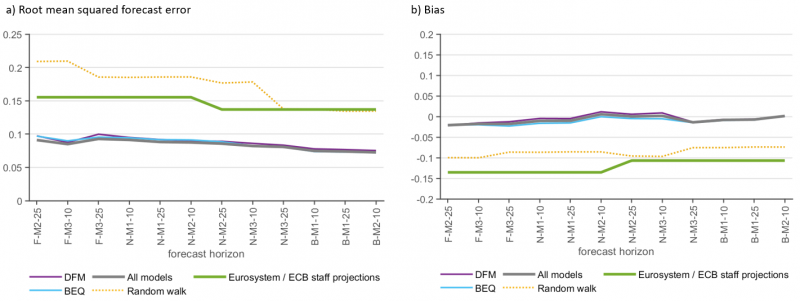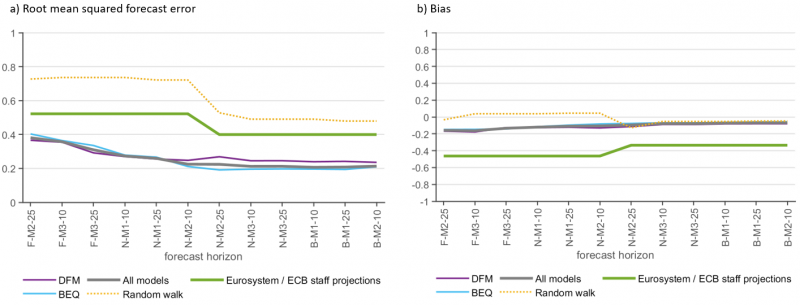References
Antolin-Diaz, J., Drechsel, T., and Petrella, I. (2021). Advances in nowcasting economic activity: Secular trends, large shocks and new data. CEPR Discussion Papers 15926, C.E.P.R. Discussion Papers.
Bańbura, M., Giannone, D., Modugno, M., and Reichlin, L. (2013). Nowcasting and the real time data flow. In Elliott, G.and Timmerman, A., editors, Handbook of Economic Forecasting, pages195–237. North Holland.
Bańbura, M. and Saiz, L. (2020). Short-term forecasting of euro area economic activity at the ECB. ECB Economic Bulletin, Issue 2/2020, European Central Bank. ECB Working Paper Series No 281521.
Bańbura, M., Belousová, I., Bodnár, K. and Tóth, M. (2023): Nowcasting employment in the euro area, ECB Working Paper, No. 2815.
Bobeica, E. and Hartwig, B. (2023). The COVID-19 shock and challenges for inflation modelling. International Journal of Forecasting, 39(3): 519–539.
Bok, B., Caratelli, D., Giannone, D., Sbordone, A. M., and Tambalotti, A. (2018). Macroeconomic nowcasting and forecasting with big data. Annual Review of Economics, 10(1): 615–643.
Botelho, V. and Dias da Silva, A. (2019): Employment growth and GDP in the euro area, ECB Economic Bulletin, Issue 2/2019.
Carriero, A., Clark, T. E., Marcellino, M., and Mertens, E. (2022). Addressing COVID-19 Outliers in BVARs with Stochastic Volatility. The Review of Economics and Statistics, pages 1–38.
Consolo, A., Foroni, C., and Martínez-Hernández, C. (2023). A mixed frequency BVAR for the euro area labour market. Oxford Bulletin of Economics and Statistics.
Evans, M. D. D. (2005). Where are we now? real-time estimates of the macroeconomy. International Journal of Central Banking, 1(2).
Giannone, D., Reichlin, L., and Small, D. (2008). Nowcasting: The real-time informational content of macroeconomic data. Journal of Monetary Economics, 55(4):665–676.
Hirschbühl, D., Onorante, L., and Saiz, L. (2021). Using machine learning and big data to analyse the business cycle. ECB Economic Bulletin, Issue 5/2021, European Central Bank.
Karagedikli, O. and Özbilgin, M. (2019). Mixed in New Zealand: Nowcasting labour markets with MIDAS. Analytical Note Series 04, Reserve Bank of New Zealand.
Lenza, M.and Primiceri, G. E. (2022). How to estimate a vector autoregression after March 2020. Journal of Applied Econometrics, 37(4): 688–699. ECB Working Paper Series No 281523.
Ng, S. (2021). Modeling macroeconomic variations after Covid-19. NBER Working Papers 29060, National Bureau of Economic Research, Inc.
Schorfheide, F.and Song, D. (2023). Real-time forecasting with a (standard) mixed-frequency VAR during a pandemic. International Journal of Central Banking, forthcoming.








